Clove Hitch
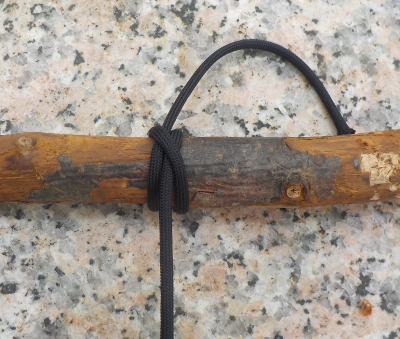
How to Tie a Clove Hitch Knot
By Chris Byrd
Knowing how to tie knots is an essential skill for those who choose to spend time outdoors. Having a working knowledge of knots can come in handy in a variety of situations from farm work, to wilderness survival, to search and rescue.
A simple and useful knot to begin your journey is the clove hitch. This hitch is traditionally used to begin and end lashings (such as the square and the tripod lashing) because of its ease during the tying and untying stages (the ease in which a knot can be untied is an important and oft forgotten consideration when choosing a knot type).
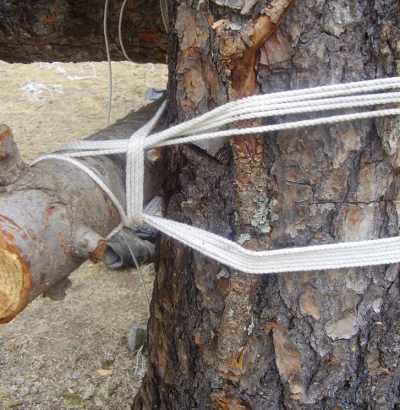 square lashing
square lashingSteps for Tying a Clove Hitch
The clove hitch is a quick and easy knot to learn, but before we begin a couple of basic knot tying terms must be defined:
Working end: The end of the line that is being directly manipulated.
Standing end: The main line; the portion of the line not being directly manipulated.
Hitch: A knot that can conform to the object to which it is being tied.
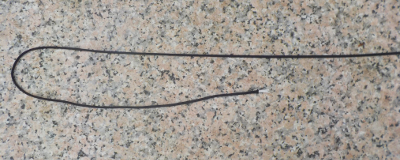 The working end is the cut end in the photo above. The standing end is the part that extends out of the frame.
The working end is the cut end in the photo above. The standing end is the part that extends out of the frame.
Now that we know the basic working terminology let’s move on to the step-by-step instructions for tying this useful knot.
Step 1:
Lay the line over the object to which you will be tying your knot.
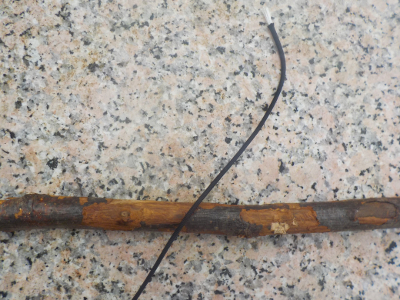 laying the line over the object
laying the line over the object
Step 2:
Next, take your working end and pull that end either under or around the object to which you will be tying your hitch.
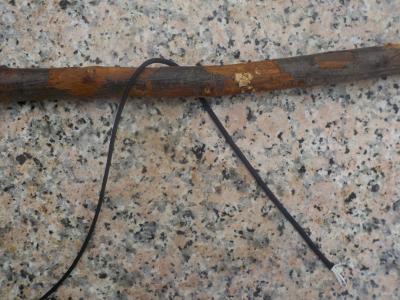 working end brought under the object
working end brought under the object
Step 3:
Pull the working end back over the object and cross the working end over the standing end forming an ‘X’.
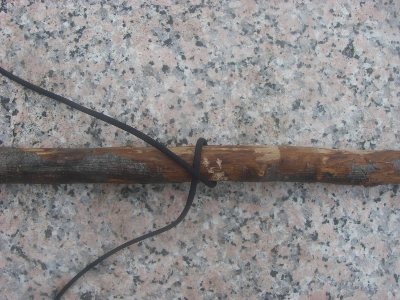 forming an "X"
forming an "X"Be More Prepared For Your Next Outdoor Adventure!

Don't leave home without knowing these six essential survival skills. Our free survival mini guide reveals the strategies of:
- Shelter & fire to prevent the number one cause of death
- Obtaining clean water to avoid life-threatening dehydration
- Common wild survival foods and other critical skills!

Step 4:
Now, pull the working end back under the object and slide the working end underneath itself.
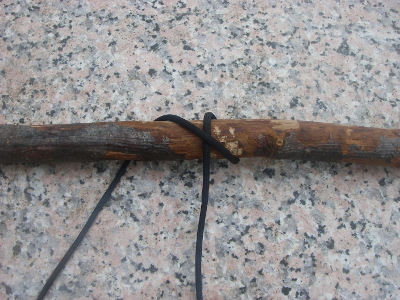 bringing the working end back under the object
bringing the working end back under the object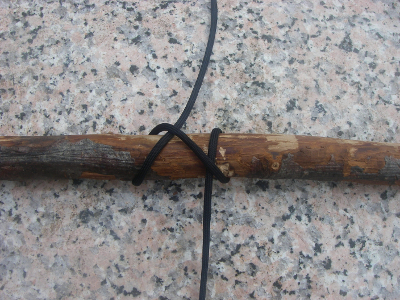 sliding the working end underneath itself
sliding the working end underneath itself
Step 5:
Grasp both the standing end and the working end and pull in opposite directions to tighten the hitch.
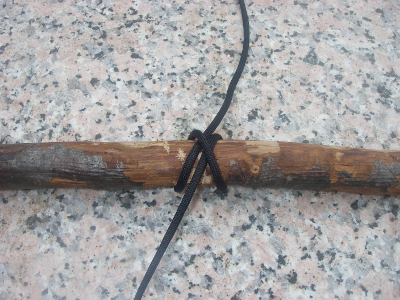 tightening the hitch - almost finished
tightening the hitch - almost finished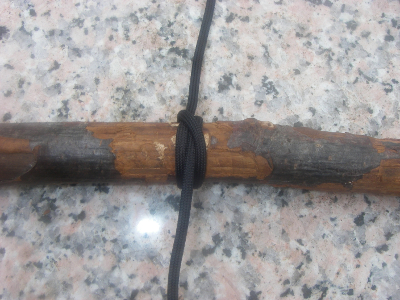 completed clove hitch knot
completed clove hitch knot
Troubleshooting:
Issues can arise with the clove hitch if constant pressure is not applied (the knot will loosen). The knot can also loosen if the object to which the hitch is tied rotates; so make sure to tie your hitch to an object that is stationary.
To conclude, there are many knots that can be used in the outdoors, each with their strengths, weaknesses, and specific uses. The clove hitch is one of the simplest and easiest knots to learn, and can be used in a variety of situations.
I encourage you to go out and learn the clove hitch, as well as any other knots that strike your interest. As with everything else, the more you know about knots, the more you can do with this time tested skill!
By the way, if you enjoyed this article then you'll love our survival mini guide. You'll discover six key strategies to staying alive in the outdoors plus often-overlooked survival tips. We're currently giving away free copies here.
Related Resources:
Learn much more at our Survival Knots, Cordage, & Lashings Class
Interesting facts on Wikipedia's Clove Hitch page

About the Author: Chris Byrd is an instructor at Alderleaf. He has been teaching naturalist skills for over twenty years. Learn more about Chris Byrd.
Return from Clove Hitch back to Wilderness Survival Articles
Is The Essential Wilderness Survival Skills Course Right for You? Take the "Online Survival Training Readiness" Quiz
See for yourself if this eye-opening course is a good fit for you. It takes just a few minutes! Get your Survival Training Readiness Score Now!

Grow Your Outdoor Skills! Get monthly updates on new wilderness skills, upcoming courses, and special opportunities. Join the free Alderleaf eNews and as a welcome gift you'll get a copy of our Mini Survival Guide.

 The Six Keys to Survival: Get a free copy of our survival mini-guide and monthly tips!
The Six Keys to Survival: Get a free copy of our survival mini-guide and monthly tips!
Learn more